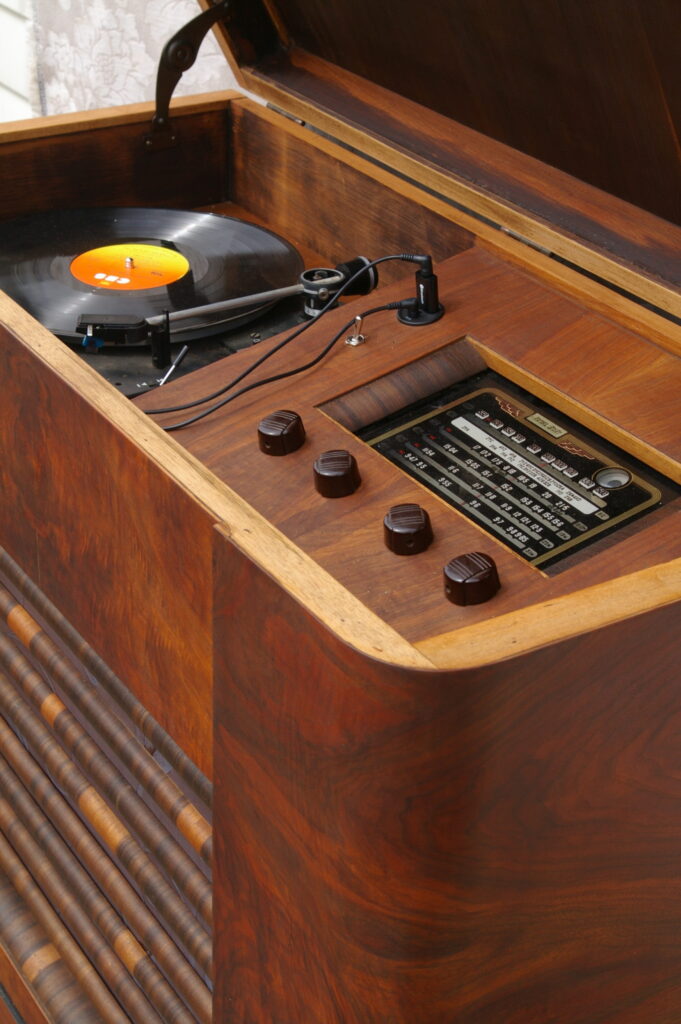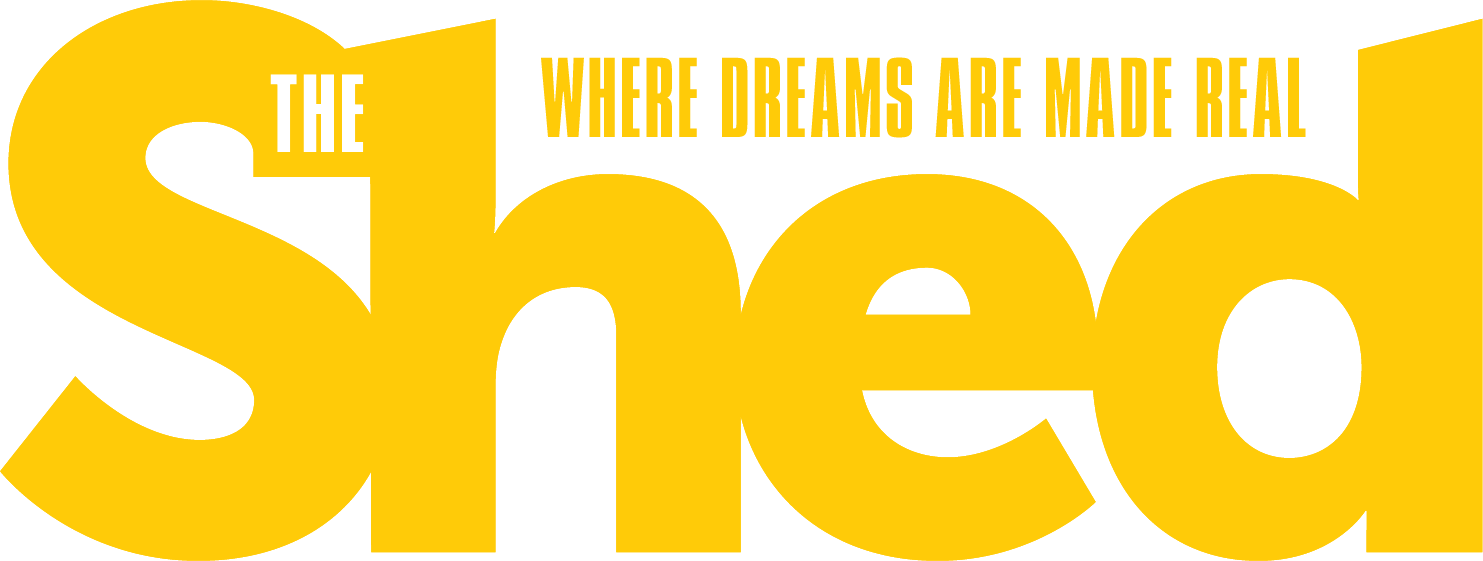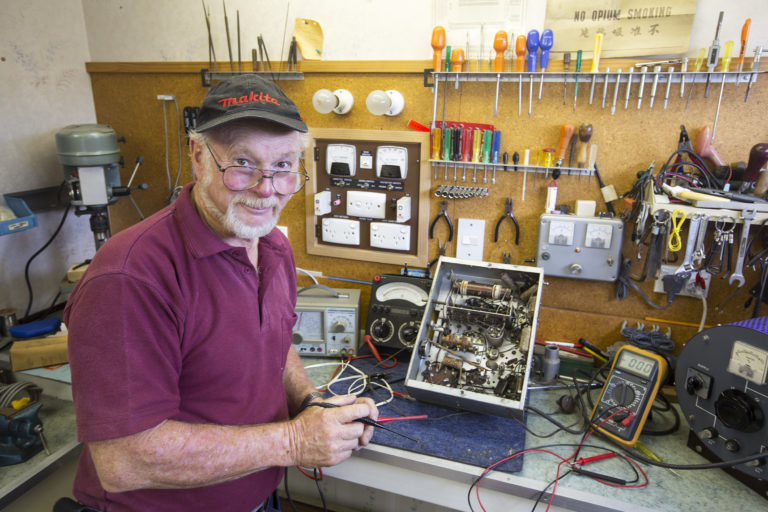Bluetooth and 3D printing are harnessed to help breathe life back into radiograms and hi-fis
By Jude Woodside
Photographs: Jude Woodside
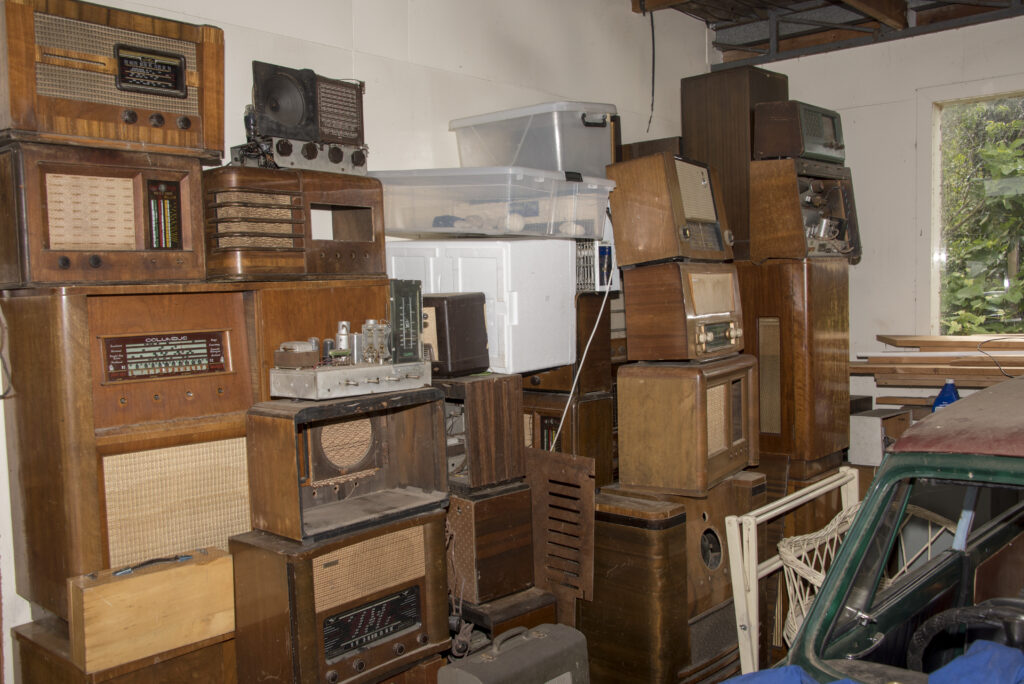
The family gathering around the wireless to listen to the Friday evening programme may be a thing of the distant past, but the beauty of those old valve-driven radios lives on in the dedicated work of Retro Radios.
Based in Dannevirke, Alister Ramsay works from an assortment of sheds, a garage and a container, lovingly restoring old valve radios and radiograms. In a workshop redolent of the glory days of the 1940s to the 1960s, with nostalgic posters for Life magazine and a smattering of old cameras – another hobby is collecting old cameras – Alister works to a background of smooth jazz issuing from a variety of beautifully restored valve radios producing warm-toned music to set the mood.
It’s not hard to imagine that you are back in a 1950s hi-fi shop surrounded by dozens of fully restored radios looking as they did when they were new. Alister has a small AM radio transmitter to give his radios something to tune to, although they can be used to play from any source via Bluetooth. He sources the radios from second-hand dealers, at auctions up and down the country, and has quite a few that he is restoring on commission.
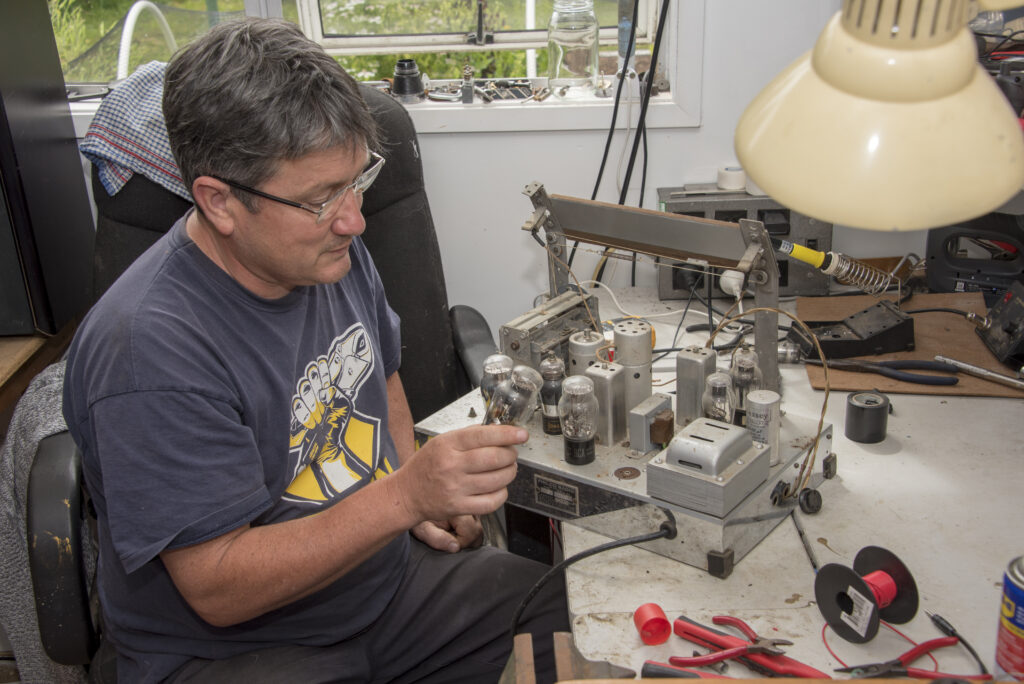
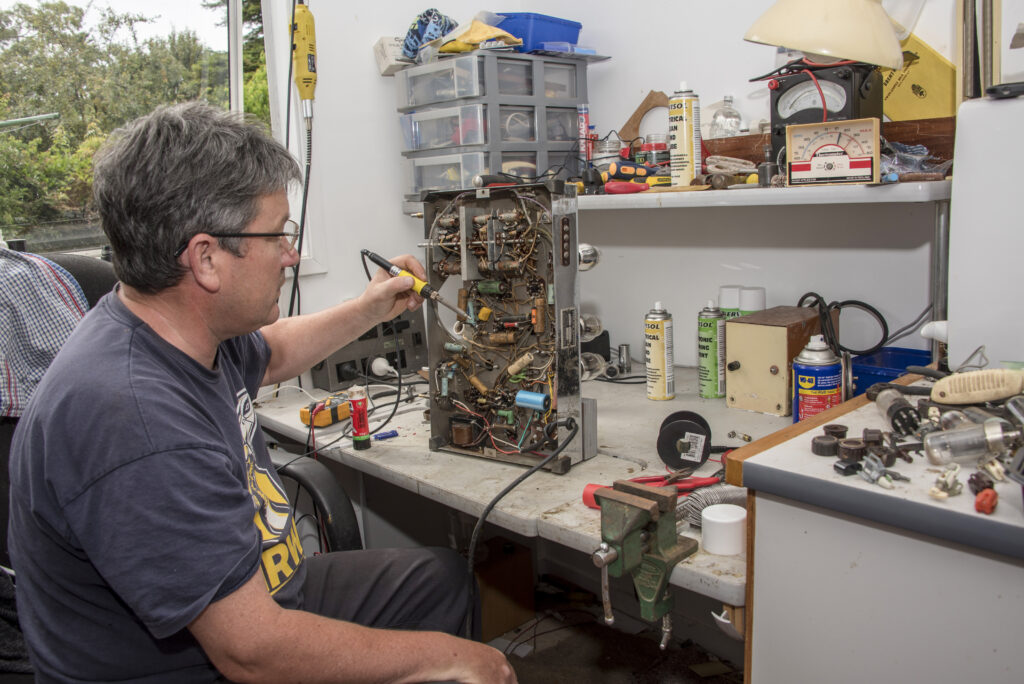
Restoring and modifying
The process starts with stripping the electrical components from the case. The old wax capacitors are replaced with modern electrolytic and ceramic capacitors. The capacitors are usually the first thing to break down as they are made from wax and paper and will have deteriorated long ago. The set is then connected to power and turned on to determine if any of the valves need replacing.
Alister is helped by a friend, now retired after a lifetime of repairing radios and TVs, who possesses a hoard of old valves still unused and the knowledge of their operation. He also has a very handy valve tester to trace faults.
Once the chassis is repaired and working, it is tested and given an Electrical Safety Certificate. Alister can also supply a Bluetooth dongle that runs off the radio power supply.
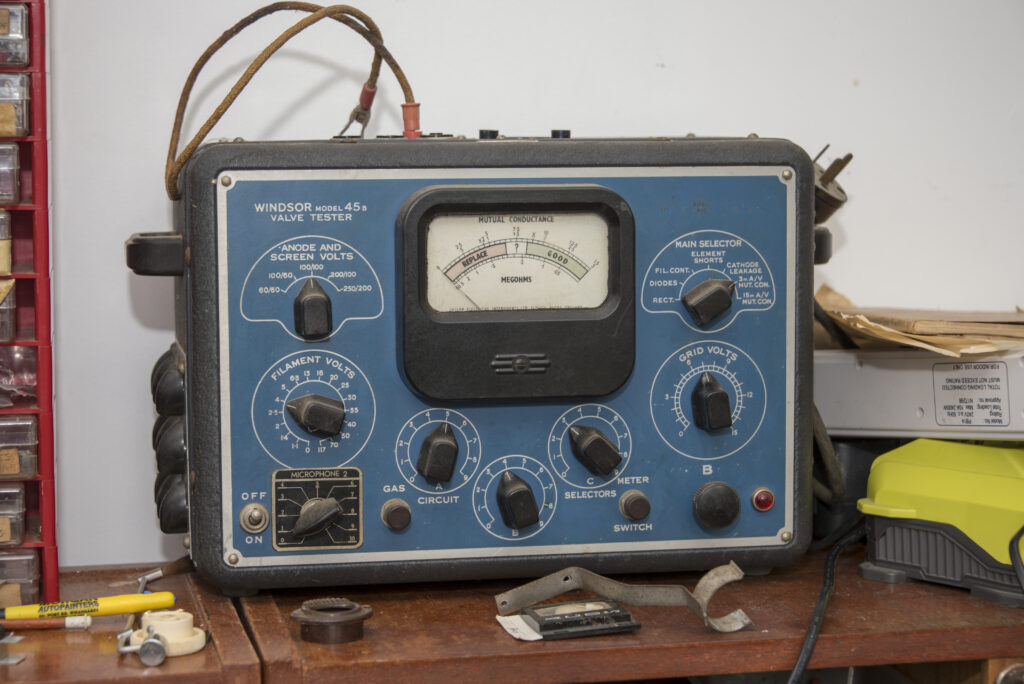
AM was the go
Old radios were primarily used for the AM network and shortwave for long distance.
FM was virtually unheard of, although Alister has a German set from the 1950s with FM capability. To bring them up to date, he adds an auxiliary connection to the radio amplifier stage that can inject a signal via Bluetooth sourced from any other device, iPad, phone or computer tuned to FM, Spotify or any other source. This way, you can take advantage of the valve amplifier and the substantial old speakers that these early radios possessed.
The beauty of valve amplifiers, as any hi-fi aficionado can tell you, is the warmth and richness of the sound. The older speakers were very substantially made too and, mostly, still operational.
“One trick I have learnt is that micropore tape is very good for repairing any small holes or tears in the paper cones. It’s a paper tape and it sticks so well because it’s paper to paper. It’s available in every first-aid kit and is the tape that nurses use most often.” As luck would have it his wife happens to be a nurse.
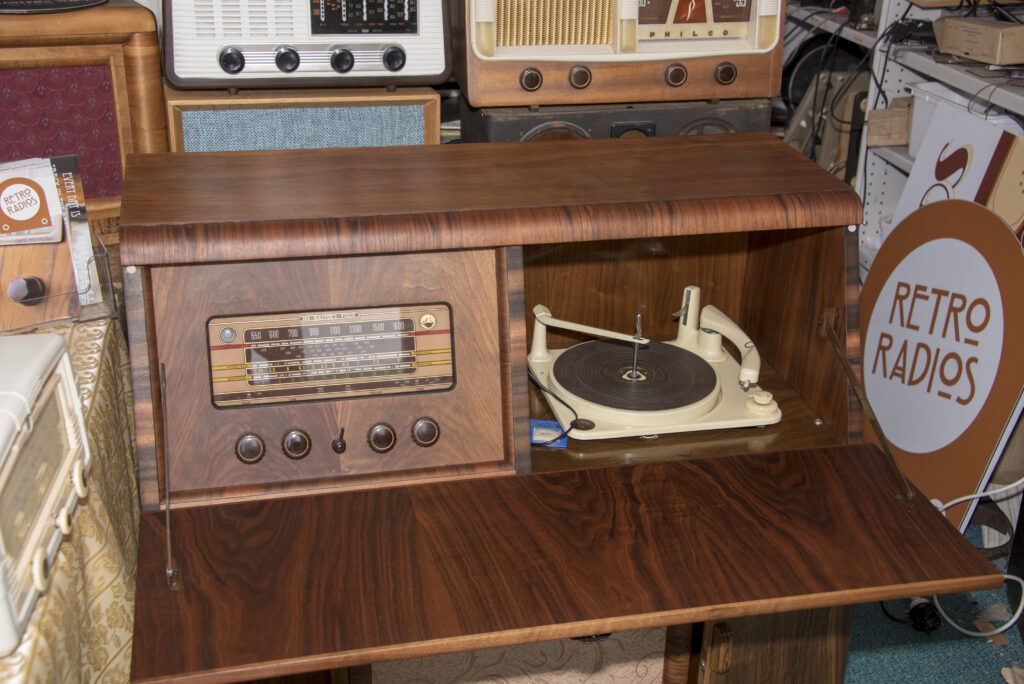

Garage sale
Alister started restoring old radios when he picked up a Columbus (one of the very popular New Zealand-made brands from the 40s) at a garage sale for $5.
“I fixed up a couple of capacitors and got it going. The sound quality wasn’t that good – old valve radios sound scratchy and horrible because the AM radio transmitters aren’t as powerful as they were when AM was popular. Nowadays, they are pumping out a few hundred watts, whereas before, it was 100,000 watts. “You also get all sorts of interference from all the other devices you have in the home. When these radios were made, the only thing plugged into the power was the radio – there were no other sources of interference, like microwave ovens, TV, and wifi that all cause AC interference.
“So I thought maybe I could feed a signal into it. I did some research and found I could connect an auxiliary device into the circuit, and then I found I could hook up a Bluetooth device. Then friends starting asking me to do one for them, and it started to grow.”
He developed his business and his marketing material with mentoring and help from the local Tararua Business Network in Dannevirke to turn what was a burgeoning hobby into a thriving part-time business selling sets all over the country.
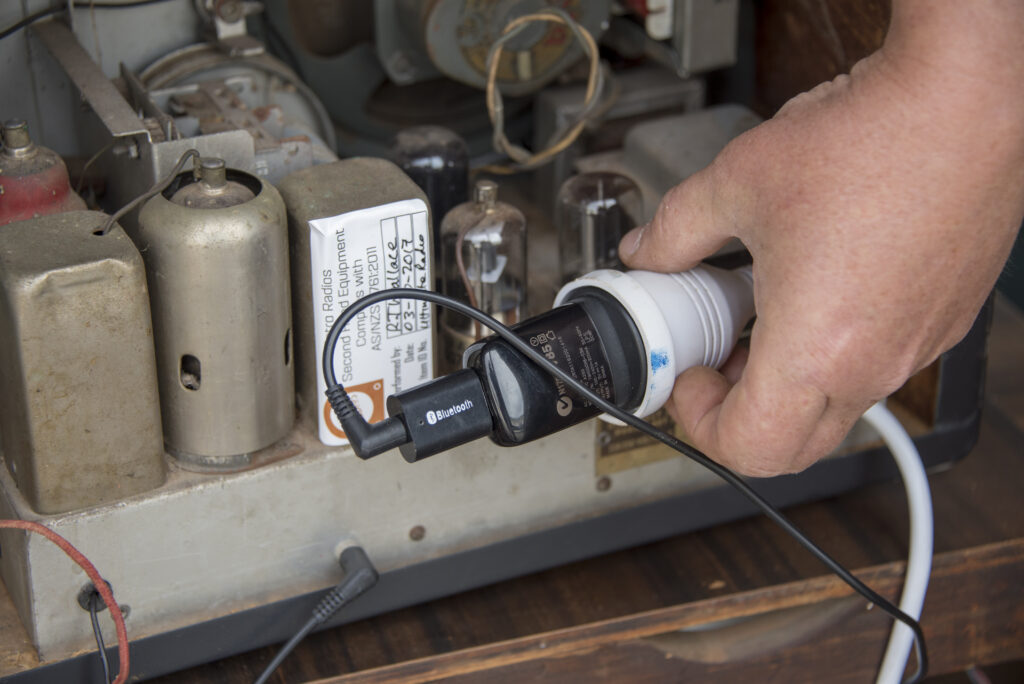
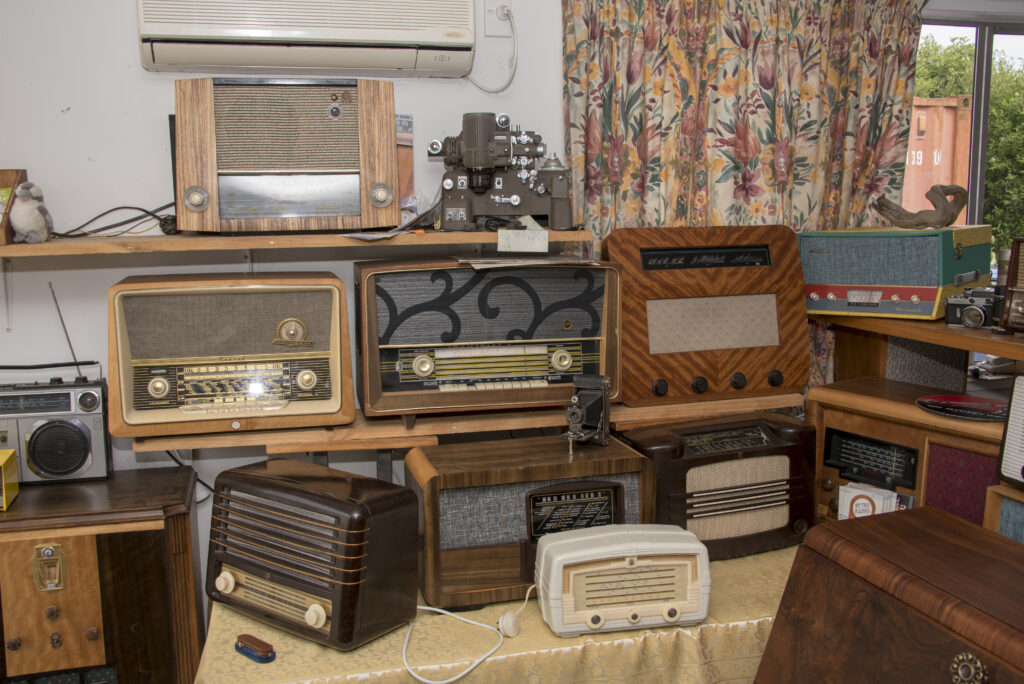
Radiogram upgrades
Radiograms were popular from the 1940s to the early 1970s, incorporating both a radio and a turntable for playing vinyl records. Some later models even incorporated a TV. Alister replaces the belts, and in some instances, he will replace the turntable with a more modern one. Vinyl records are making a comeback, and valve amplifiers are also undergoing a renaissance.
When he first receives them, they are not usually in great condition, with up to 80 years of accumulated grime and smoke stains.
“It’s amazing what a difference it makes to just clean off the dirt, and you can start to see the original colour of the cabinets underneath,” says Alister. He often has to strip the old finish from the cabinets for which he uses the locally produced Coopers Strip Club. The stripper does no damage to the underlying veneer. If the cabinet is undamaged apart from the built-up dirt then the restoration is fairly straightforward – cleaning, stripping and polishing the cabinets.
Any damage to the veneers is fixed, and the piece given a fine sanding down to 400 grit and then oiled and polished with a locally-made wax polish. The fabrics that typically were used to cover the speaker are carefully replaced and brass and bronze accents polished or replaced and the cases buffed to a glow.
The transformation is astonishing. From a drab piece of furniture emerges a glowing work of art, complete with lights. Some of the old sets had glowing screens, others had a “magic eye tuner” that glowed in fluorescent green when a station was tuned in accurately. The use of veneers was often inspired, creating accents and highlights in the contrasting woods.
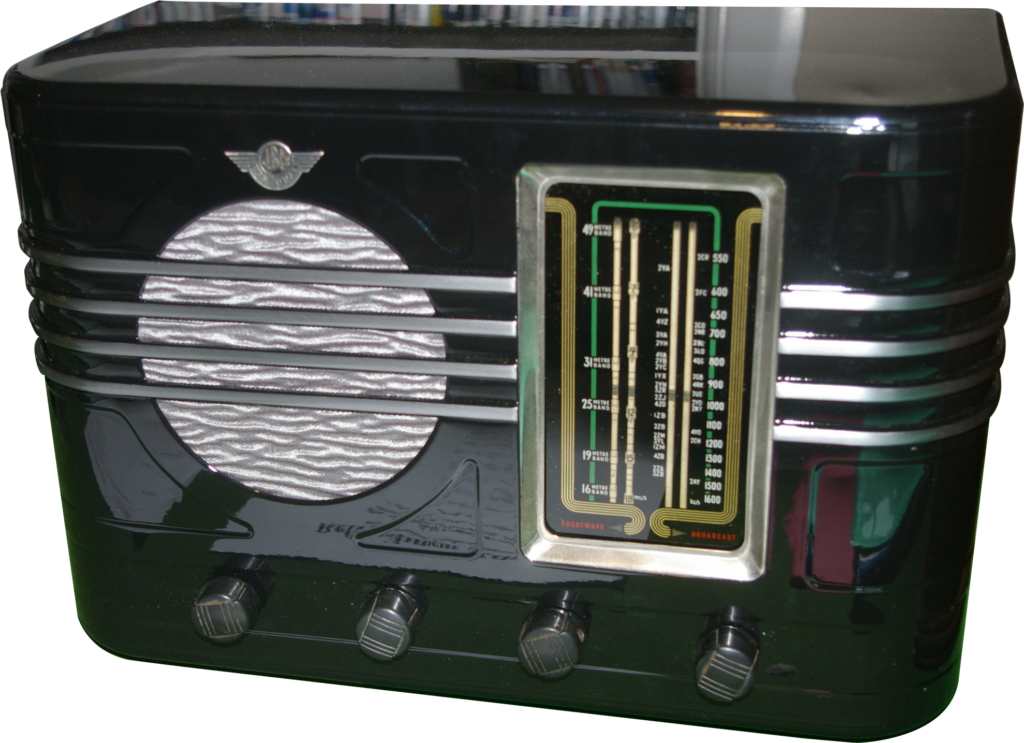
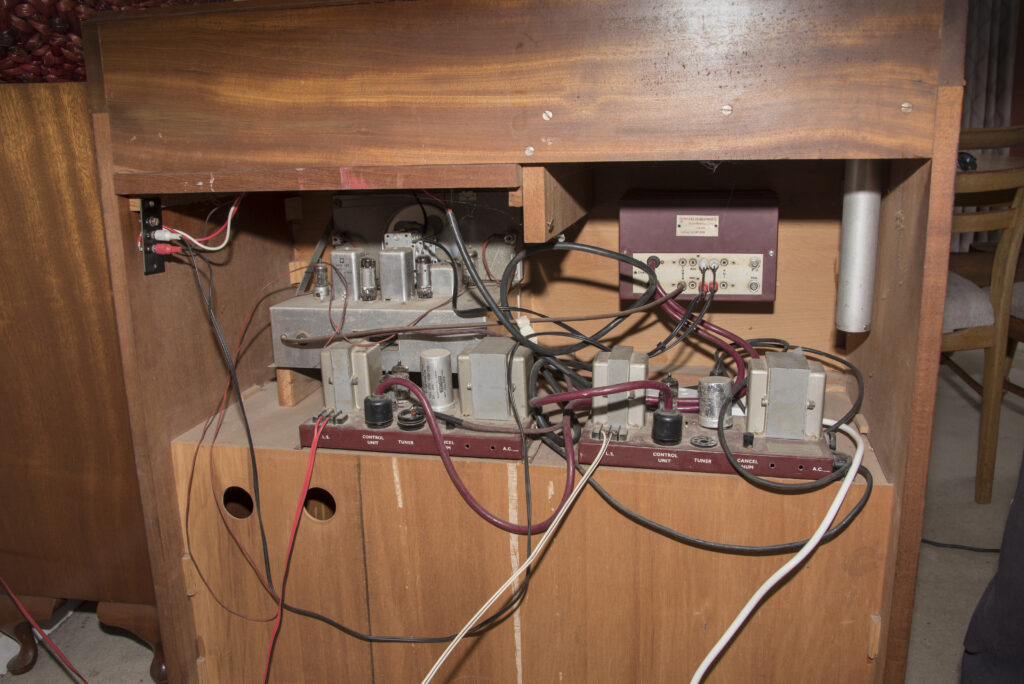
3D printing
With so many sets available, Alister is often given old radios but usually buys as many as possible. He has plenty of spare parts, although now his son has recently acquired a 3D printer and CAD skills he his able to reproduce hard-to-find knobs and details.
Alister has a ready supply of one very popular set from the ’50s – a kitchen shelf radio that went by various names but most commonly “Courier”. This set has a steel cabinet that was finished in a variety of colours. Alister buys them whenever he can find them and strips them and has them refinished by an automotive spray painter. Restored, they wouldn’t look out of place in a modern kitchen alongside that retro-look toaster.
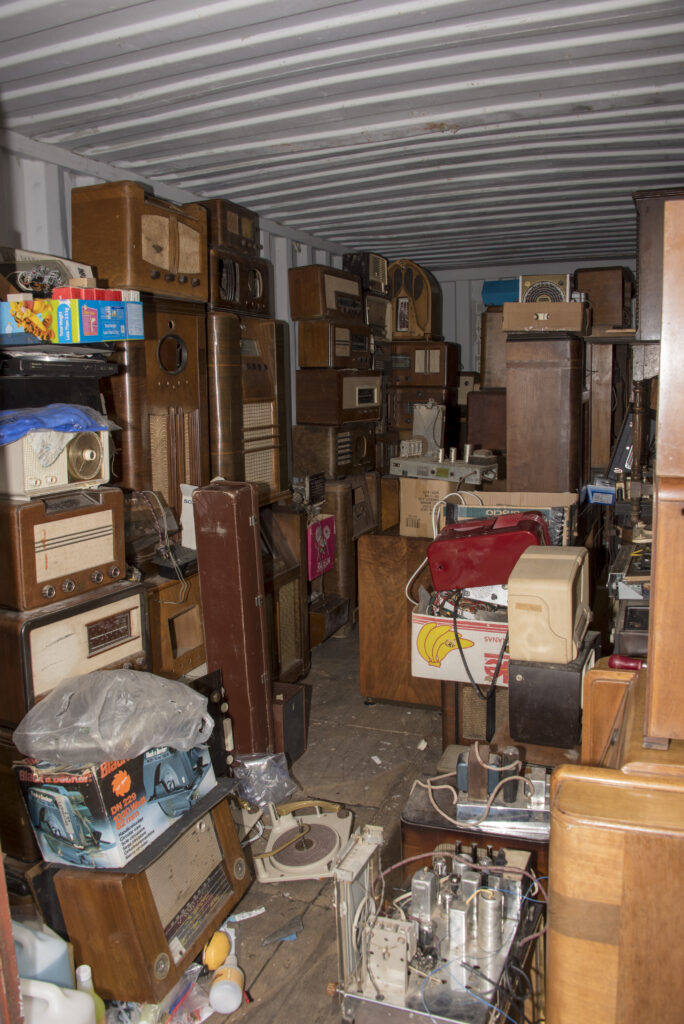
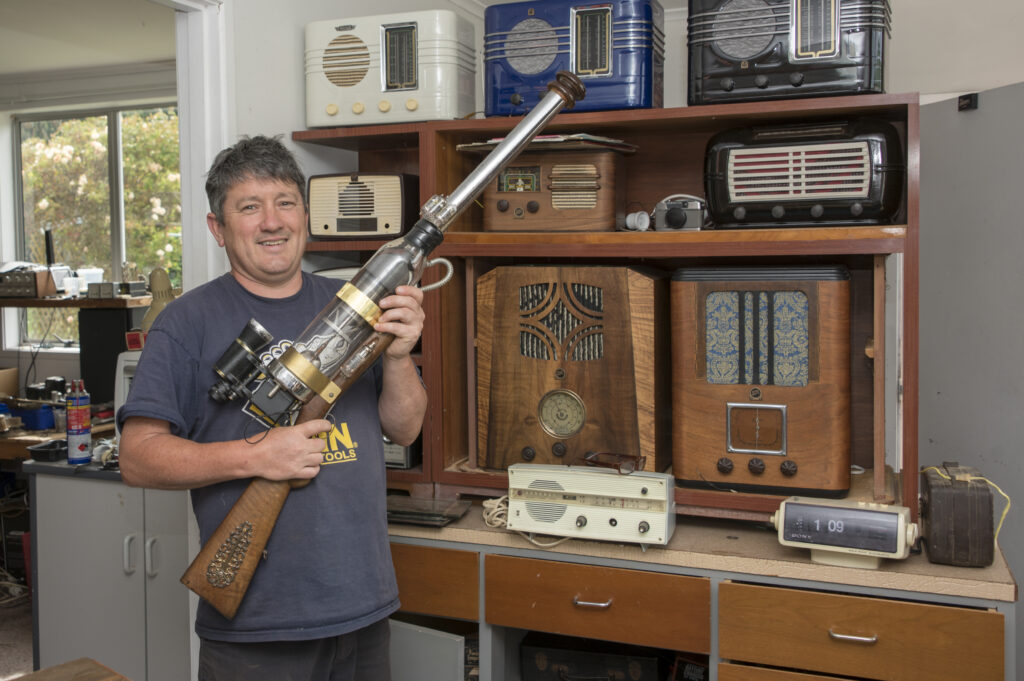
Rare pieces
His collection includes many rare examples of early hi-fi, including a very rare bi-amplified radiogram built in 1959 by Rogers Developments, a British audio company. Started in 1947 by Jim Rogers, it was famous for the development of the LS3/5A studio monitors commissioned by the BBC in the early 1970s that became a legend among audiophiles. The Rogers set has Wharfedale stereo speakers.
He also has a beautifully restored Philips Carnegie Hall also from 1959. In its day, it was very much a state-of-the-art set, with the then-all-new stereo speakers.
It’s not all work, though. The availability of so many exotic valves gave Alister the inspiration for his steam-punk ray gun, a work in progress that he hopes eventually to make flash and glow in a realistic manner.
Alister regularly tours with his Retro Radios van to antique fairs and events around the country. The van contains an inverter so he can run the radios he sells. He also accepts commissions to restore sets.
For more information about retro radios and more pictures of his stock see the website www.retroradios.nz.
